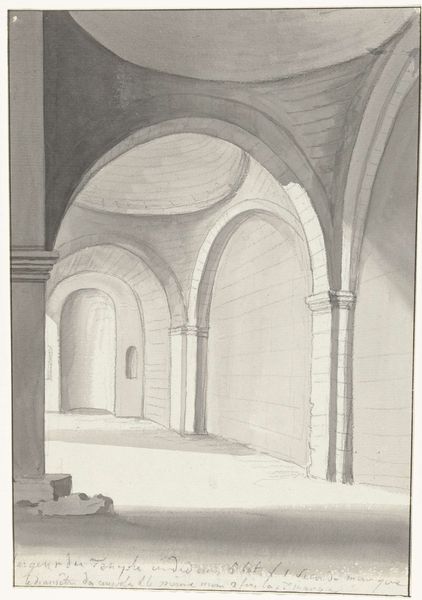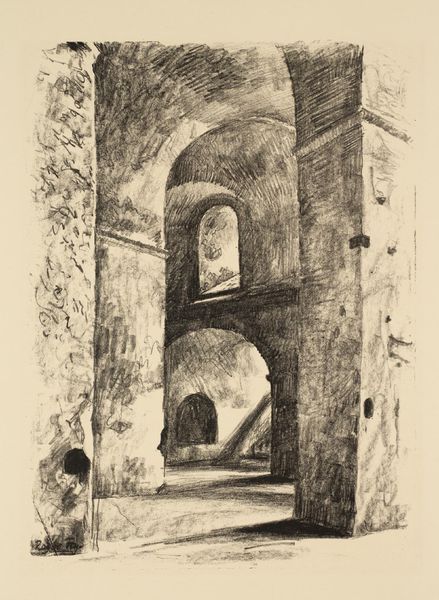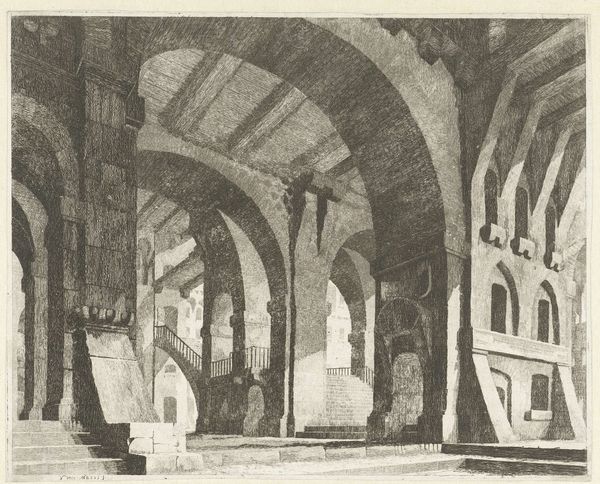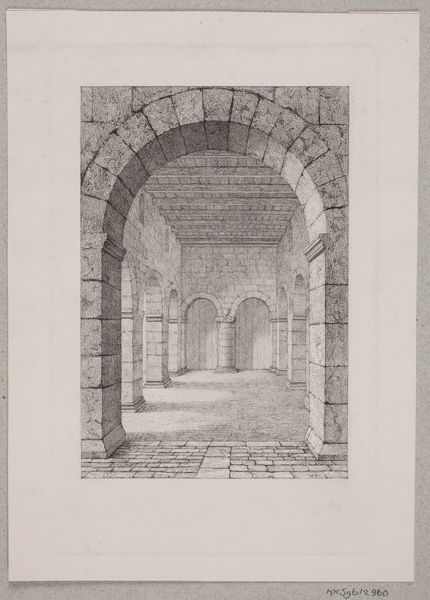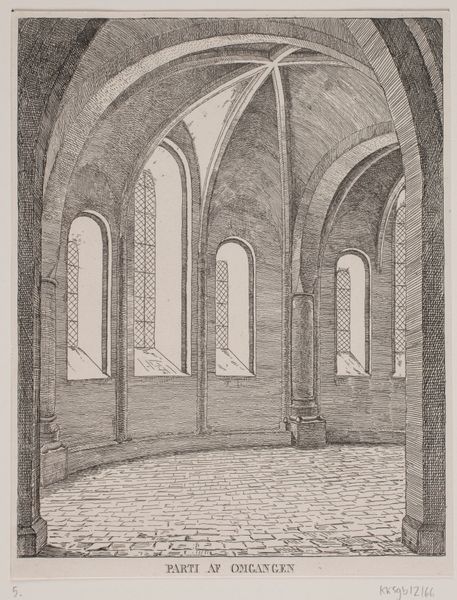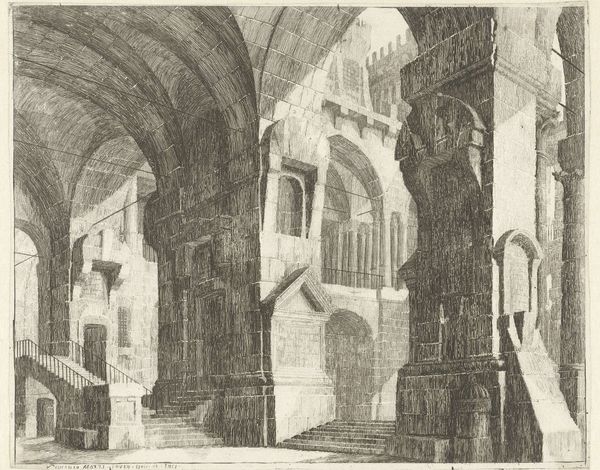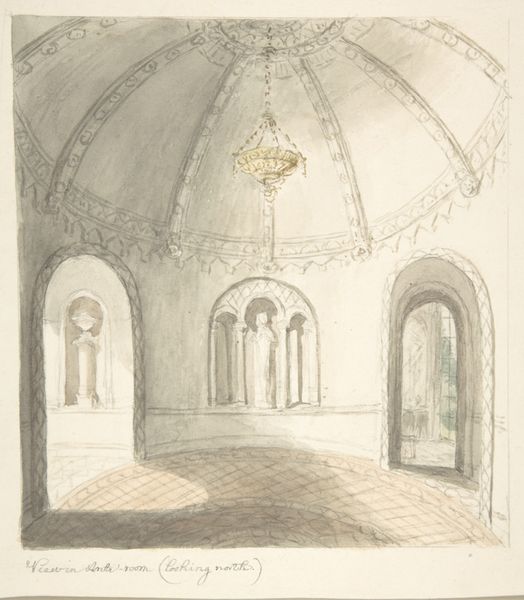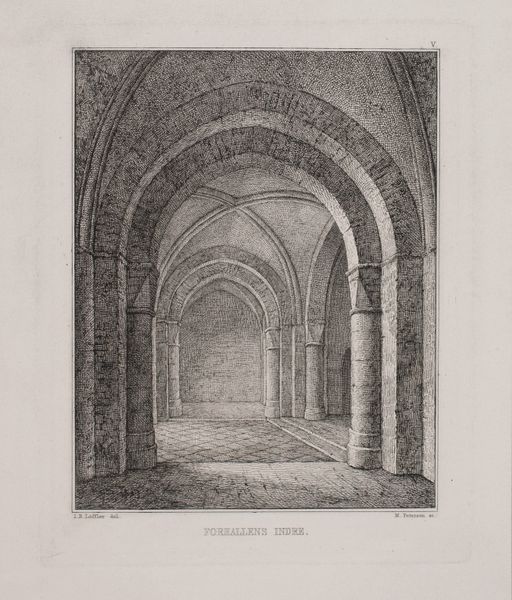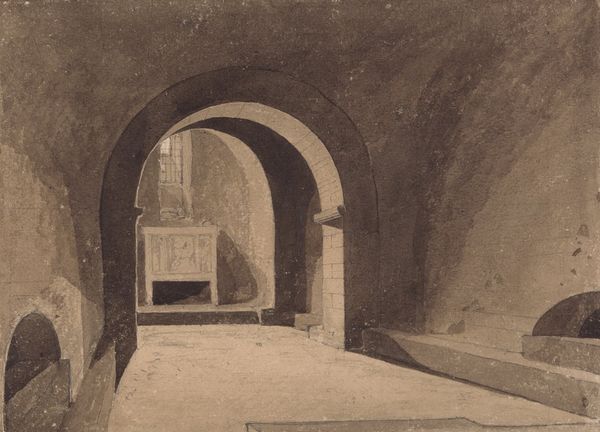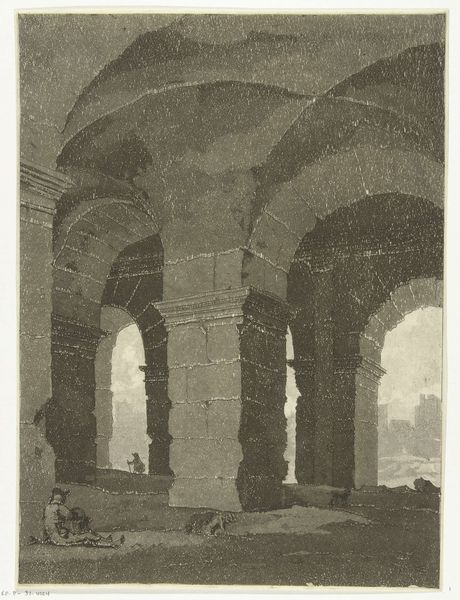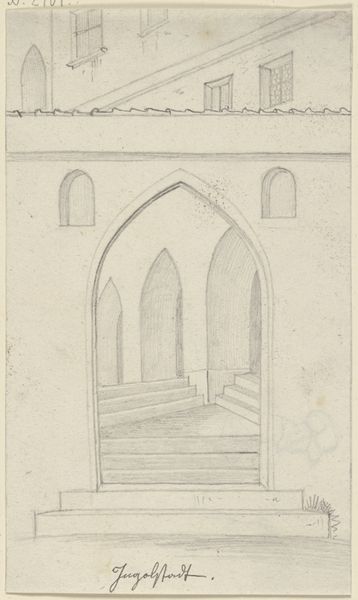
print, woodcut, engraving, architecture
# print
#
pencil sketch
#
old engraving style
#
geometric
#
woodcut
#
line
#
engraving
#
architecture
Dimensions: 126 mm (height) x 92 mm (width) (bladmaal)
Curator: This is a print titled "Det indre af Fjenneslev kirke," placing it historically sometime between 1818 and 1879. It resides in the collection of the SMK, Statens Museum for Kunst. My initial assessment? It possesses a stark, almost haunting quality, a deep reverence conveyed through rigorous lines. Editor: There’s a lot of texture happening with these lines: the cross-hatching makes me think of roughly hewn timber and stone. It highlights the materiality of the church, reminding us of the labour and craftsmanship involved in its construction. Curator: Indeed. These aren’t just any lines, are they? Considering the potential media, we might think about woodcut, engraving, perhaps even an etching process informing it. Each would reflect differing levels of artistic investment and print dissemination strategies. How does this choice of the print as a medium engage in a dialogue about its architectural subject matter and its intended audience? Editor: The line work almost mimics the precision and care of stone masonry. But I am more interested in the image itself: the timber roofing looks a bit rudimentary as though he is deliberately revealing something about the raw bones of the architecture. I mean, isn't church architecture traditionally about obscuring, through ornamentation? Curator: And here we find it exposed, stripped down, which may be a conscious reflection of the sociopolitical role the church played within Denmark at that time. Consider also that within Denmark there were different attitudes concerning iconography at the time this was created. Perhaps the relatively simple portrayal here also relates to its perception of being a national symbol. Editor: So you're seeing a critical lens there through his artistic license. In looking at this I immediately imagine what type of tool produced the starkness we see in this picture— I mean, to produce these cuts by hand—what level of effort would that entail? The materiality of this piece goes beyond just the image of stone and wood and points to the artist’s commitment and endurance. Curator: Fascinating. The beauty within the starkness also forces me to consider how architecture informs collective memory, not merely as an aesthetic object but also as an agent involved in the dynamics of heritage preservation and social narratives. Editor: It is a pretty unique visual. This artwork has made me rethink printmaking’s connection to something solid and heavy such as monumental building. Curator: For me, it emphasizes the enduring power buildings as emblems can wield. Thank you for illuminating this often-overlooked print with your perceptive gaze.
Comments
No comments
Be the first to comment and join the conversation on the ultimate creative platform.

